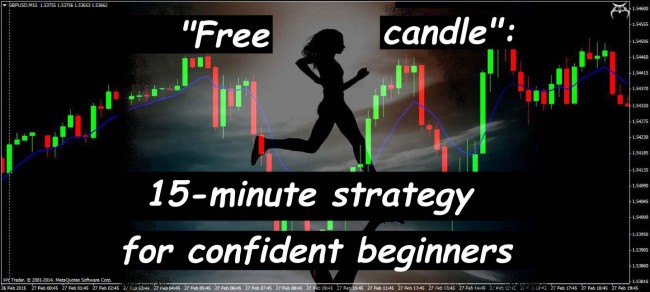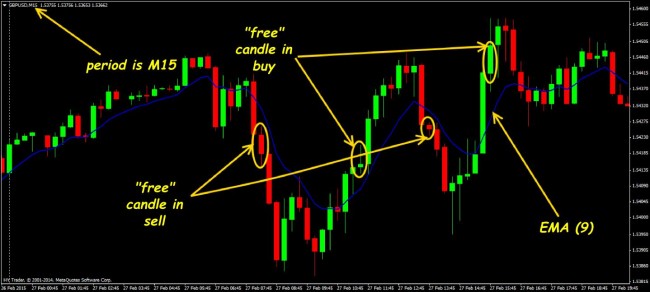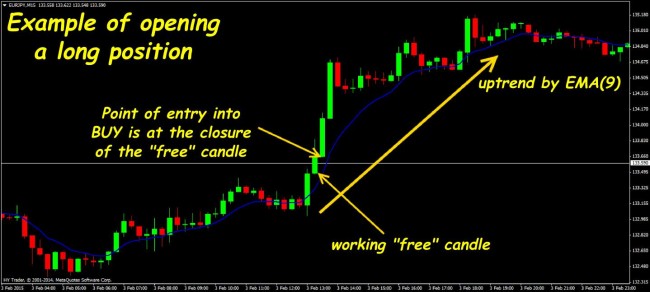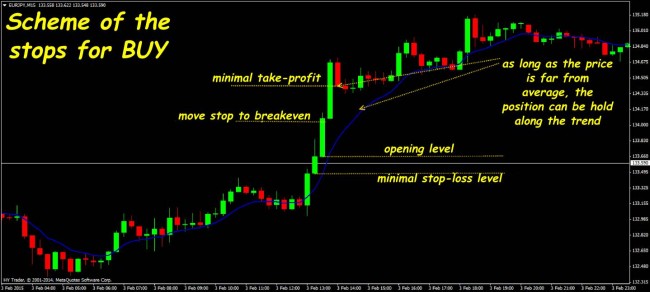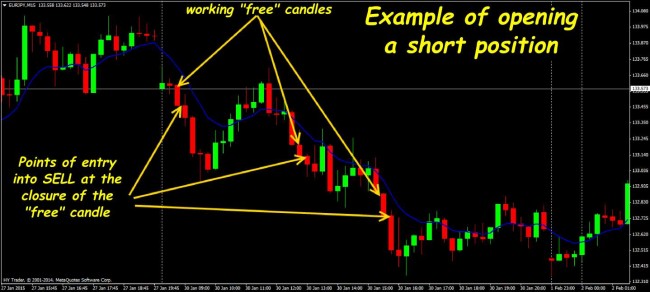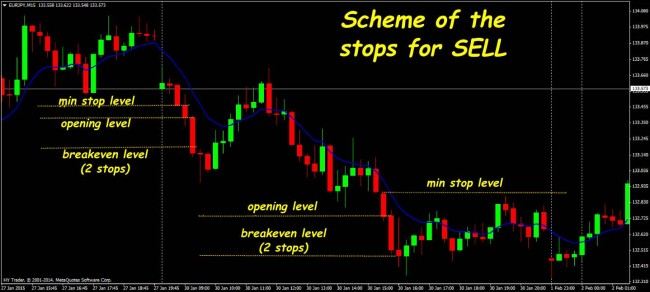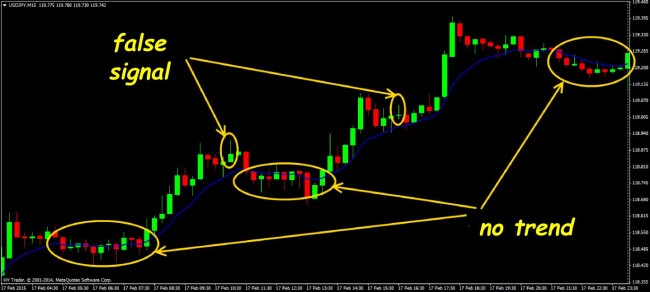The proposed 15-minute strategy is perfect for beginners who traditionally prefer short-term intraday deals. Just one indicator, minimum knowledge of candlestick analysis and simple trading recommendations allow almost anyone to earn – not much, but steadily.
Scalping attracts novice traders as a magnet to the detriment of technical analysis and risk control. You can accept the fact that it’s difficult for beginners to master a mass of indicators, but even a basic understanding of candlestick analysis can generate a regular income. If you can find a stable working scalping strategy on time, the trading account has a good chance to "survive" while its master trader gets technical knowledge and practical experience.
This 15-minute strategy stands out among the various scalping systems because it was specially designed to work with popular currency pairs on short timeframes.
Indicators and mathematics of the strategy
The method is based on using a combination of standard candlestick analysis with a high degree of reliability. Only a simple exponential moving average of closing prices with period 9 (for M15 period) is used as an indicator of the direction of the trend, and then the current candles location relative to the moving is analyzed.
Now we need to define a "free candle", which became the basis of this 15-minute strategy. This is considered to be a fully formed 15-minute candle, body and shadows of which do not touch the built moving average, despite the fact that its closing price is above the previous high for the uptrend or below the previous low for the downtrend market. On a real chart, such candles appear quite often and give good entry points.
"Free" candle should have the most regular form (medium body + medium shadows) – standard reversal patterns like "Hammer", "Doji", as well as the gap situation are not used for analysis.
Important: the body of the "free" candle can be long enough, i.e. significantly deviate from the average, so it can be dangerous to enter – sometimes you should ignore most of the signals.
Use in trading
All the major currency pairs are recommended for work – EUR/USD, USD/JPY, USD/CHF, GBP/USD – and major crosses: EUR/GBP, EUR/JPY, GBP/JPY. You should better work during European and US session – the Asian volatility may not be enough.
We’ll show the mechanics of trading at the most stable period – 15 minutes, but you can actually try larger timeframe as well. We’ll take quite a volatile pair – for example, EUR/JPY. First of all, we define the general direction of the trend – by EMA(9): bullish or bearish. Then analyze the candles location relative to the line, looking for free candles.
Thus, according to the strategy:
For bullish direction, closing price must be higher than the previous max, for bearish – below the previous low.
To go long (buy) on the 15-minute strategy, you need a "free" (white) candle located above the moving average line. Once the next candle is opened – enter at the market price, but you can also place pending order BuyStop just above the closing price of the previous candle.
StopLoss is recommended to set 3-5 points below the minimum of the "free" candle used for the analysis – after the price has passed the size of the stop, move it to breakeven and then trail along with the movement.
To enter sell, you need a "free" black candle located below the moving average. Open at the opening of the next candle – at the market price or with a pending order SellStop. Stop-loss is set on the max of the working "free" candle and moved to breakeven after the price passed at least 70% of the stop.
Profit on open positions can be calculated using the usual approach to money management, but it is recommended to use double the range (size) of the "free" candle.
Important: the 15-minute strategy gives a profit only in standard conditions. Work during periods of market instability (news, the end of the sessions, etc.) is not recommended.
Open position can be hold at the market price until the distance from a closure point to the average is at least half of the "free" candle.
Some remarks from experience
A good time to enter with the main currency pairs is 15-30 minutes after the opening of the European session, when the market has already decided on the direction of the market. The average time for an open transaction is up to 1 hour. Work without stops is not recommended.
Important: the proposed 15-minute strategy is trend only and it is not recommended to use it even for the wide flat.
You can try the options of 15-minute strategy options with another EMA period: the less the average daily volatility, the slower moving average should be.
For any tool: do not open the transaction, if:
- distance from the closing price of working "free" candle to the EMA(9) is less than 2 spreads (less than 3-4 points);
- body of the "free" candle is less than 10 points.
Usually there is a temporary rollback from the trend movement at the beginning of every hour, so it is not recommended to enter during the first 15 minutes of the hour.
Important: the method works steadily on the currency pairs, but is absolutely not applicable to any futures, where even when moving along the trend, the large "rollback" candles are consistently observed, which distort analysis and unnerve the trader.
And as a conclusion...
Trading system "Free Candle" is quite efficient in terms of the expectation: if you make deals not often but only in the most reliable configurations. Since it uses the conventional principles of candlestick analysis, you can try the simultaneous operation on several instruments at a reasonable capital management.
Availability and even some primitiveness of the system is slightly marred by a large number of "false" signals, so it is recommended to add a filter to the technique – at least the standard MACD. Do not forget: the longer the period, the stronger the signal.
This simple 15-minute strategy is useful to both beginners and experienced traders to earn on a quiet, predictable market as a small profitable addition to more complex trading systems. Source: Dewinforex
Social button for Joomla



